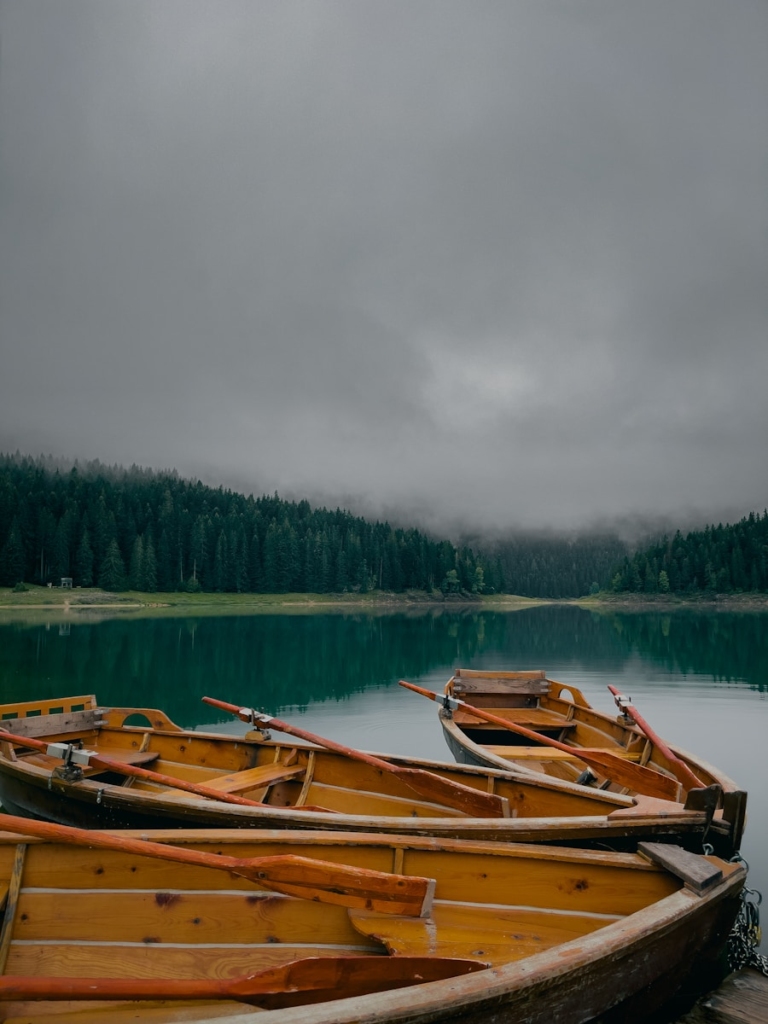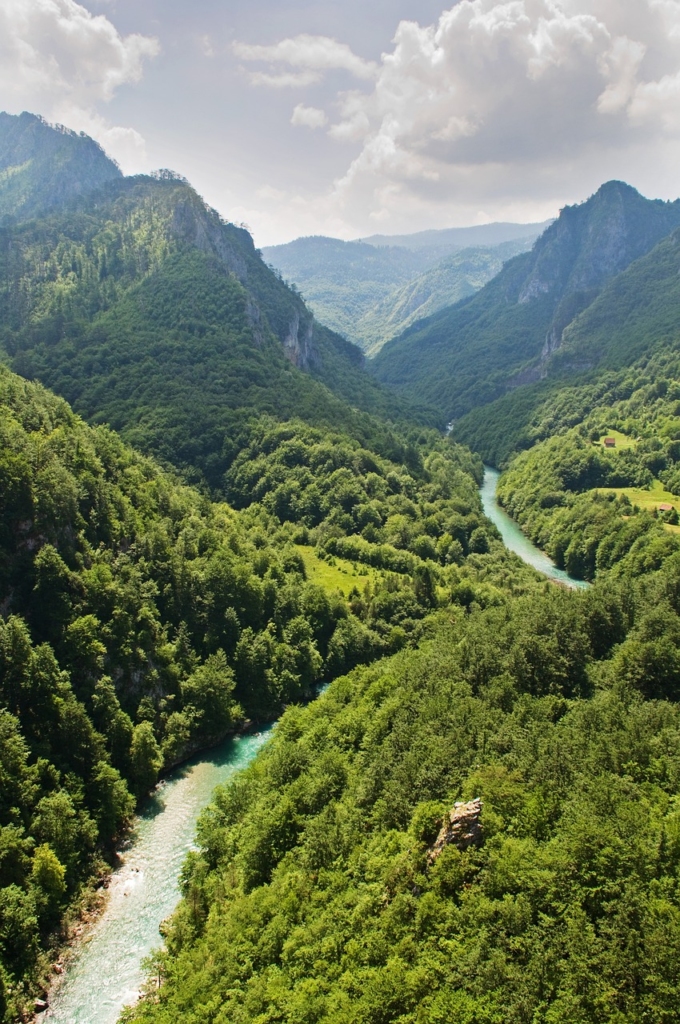Do you want to retire somewhere where turquoise waves meet rocky mountains? Then Montenegro is the destination for you, as it offers the perfect blend of natural beauty, historical history, and economical living.
Let’s have a look at the greatest places to retire in Montenegro and pick the ideal location for leisure and adventure.
Budva
Budva, also known as the “Jewel of the Adriatic,” welcomes retirees with a compelling blend of natural beauty and cultural depth. Budva combines a rich cultural legacy dating back centuries with beach life, making it the best of both worlds. Explore antique cathedrals, walk down cobblestone streets, and feel the ambiance of the past.For those who prefer spending time outside, the adjacent hills offer spectacular views of the surrounding landscape and coast. Budva is an appealing resort for retirees looking for a blend of relaxation and excitement.



When it comes to retirement living, Budva offers a range of amenities and services specifically tailored to retirees. To better understand the quality for retirees offered in Budva, let’s break down some of the main factors.
Cost of living: The cost of living varies from person to person, but some factors influence it. Budva has a better housing situation than any other European coastal city. The prices of apartments range from 400 to 800 euros, depending on their size and location. Also, keep in mind that utilities are not included in the rent fee, so plan on budgeting roughly 100 euros per month for these.
Food: Food prices in Montenegro are generally similar to those in other European countries. For one individual, approximately 250 euros per month is sufficient to purchase high-quality groceries. Given Budva’s location on Montenegro’s coast, seafood is readily available, and you can be confident that you are eating fresh seafood directly from the Adriatic Sea. When it comes to dining out, the main courses range in price from 10 to 30 euros, depending on the meal. There are numerous local restaurants, as well as many exclusive ones dedicated for special dining occasions.
Health system: Budva has a strong network of health facilities that offer both basic and specialized care. Limited capacity and equipment could require travel to larger medical centers in nearby cities for more serious health issues.
Climate: Climate is something that sets aside Budva, and every other Montenegrin coastal city. The climate in Budva is moderate, meaning that you can expect warm summers and mild winters. There is no snow in winter times, with moderate rain days.
Safety: Budva is a relatively safe city, especially for elderly people. Basic precautions should be taken just like in any city, especially during peak tourist season.
Overall, Budva is one of the top recommendations for retirees looking to spend their old days at the coast of the beautiful Adriatic.
Kotor
Kotor, located on the coast of the Bay of Kotor, draws visitors with its medieval architecture, magical cobblestone streets, and stunning panoramic views. This UNESCO World Heritage site delights visitors with its rich history and natural beauty.

Kotor offers retirees a relaxing lifestyle surrounded by breathtaking natural beauty. Residents can enjoy walks by the water, boat trips to nearby islands, and outdoor dining overlooking the sea. The city’s rich maritime history is evident in the many museums and cultural attractions that offer retirees ample opportunity for exploration and learning.



Living in Kotor as a retiree means being a part of a tight-knit community where friends become neighbors and new experiences occur every day.
Now let’s take a look at different aspects of what makes Kotor your destination for retiring.
Cost of living: When it comes to the cost of living in Kotor it is very similar to Budva. As expected it is cheaper than most of other European coastal cities. The cost of the rent varies on the location and the size of the apartment so be prepared to pay anything between 300 euros and 800 euros. Utilities are also not included in the price, so be prepared to set aside around 100 euros for utilities per month.
Food: The price of buying groceries is very similar in every Montenegrin city, so expect to pay between 150 and 250 euros per month for good quality groceries. Fresh fruits and vegetables, as well as fresh seafood, are very accessible, especially in the old town of Kotor where outside the gates of the city, small markets are often displayed. The small markets (pjaca) offer a diversity of fresh and homemade food by the locals. Eating out can cost anything between 10-20 euros on regular meals, and 30 and above at dining at some fancier places.
Air quality: Despite the lack of precise data on Kotor’s air quality index, it is generally agreed upon that the region has good air quality, partly because of its proximity to the sea and its preserved natural environment.
Health facilities: Basic and specialized medical care are provided by Kotor’s wide range of health facilities. A variety of medical services tailored to the needs of elderly citizens are available. Specialists in healthcare, including cardiologists, orthopedists, neurologists, ophthalmologists, dermatologists, and others, can be found in Kotor and offer specialized care and treatment for a range of medical conditions.
When it comes to safety, the same applies to Kotor like to Budva. It is an overall very safe city, but be aware during the peak tourist season.
With everything mentioned above combined one could conclude – Kotor could be one of the best places to retire in Montenegro if you are a seaside lover.
Perast
The small town of Perast provides a peaceful haven on the shores of the Bay of Kotor for those who long for a slower pace of life. Perast radiates old-world charm at every turn with its baroque palaces, picturesque waterfront promenade, and laid-back vibe.

Despite being small, Perast is full of personality and charm. The village is the ideal location to get away from the noise of modern life because of its charming historic architecture and peaceful atmosphere. The elderly can simply unwind and enjoy the Mediterranean sunshine, go for a stroll, or dine at waterfront restaurants serving fresh seafood.
There are many perks of retiring in Perast, so let’s break them down.
Cost of living: Given that it is a small city, it comes as no surprise that the cost of living in Perast is relatively lower than the other coastal cities of Montenegro. Even though there is no specific data on the cost of living, you can expect to pay anything between 300 and 500 euros for the apartment, depending on the size. This is comparatively lower than in Budva and Kotor. The utilities should not exceed a 100 euro mark either. The fact that it is a very small city makes it perfect for retirees as everything needed is at a walkable distance.
Food: When it comes to food I have to mention once again, the groceries cost relatively the same in every Montenegrin city. Expect to spend between 200 and 250 euros per month on groceries. Fresh seafood is available at every corner, at a relatively low cost. What makes retiring in Perast even more attractive is that you will adjust to the style of life of the locals easily, and once you do that they will be more than willing to help you pick out the best places to get your food. The prices of eating out are similar to those in Kotor and Budva, with the regular meals ranging between 10 and 30 euros.
Health facilities: Although there may not be large medical centers in Perast itself, there are nearby health facilities in cities like Kotor, making it easier to access health care.
Climate: With warm summers and moderate winters, Perast has a typical Mediterranean climate that is perfect for retirees who like moderate temperatures.
Safety: Perast is a popular retirement destination for people who value safety because of its peaceful environment and relative safety. Note: be aware during the peak tourist season.
With all of this, Perast remains an appealing destination for retirees seeking the tranquility, charm, and beauty of coastal living.
Zabljak
Žabljak, a mountain pearl in Durmitor National Park, offers an unforgettable nature experience for retired adventurers. Žabljak is surrounded by imposing peaks, pristine lakes, and lush forests, offering endless possibilities for exploring the wilderness. Žabljak is an ideal place for retirees to connect with nature, whether it’s hiking, skiing, or simply enjoying the stunning scenery.



Retirement in Žabljak means waking up every morning with an incredible view of Durmitor that takes your breath away. The unspoilt nature of the city provides a peaceful respite from the stresses of everyday life, allowing retirees to reconnect with nature and refresh their spirits.
Living costs in Žabljak may be lower than in larger cities due to its lower number of tourists. Prices for food, accommodation, and recreational activities are typically lower.
Rent prices: Prices range between 200 and 500 euros per month, depending on size, location, and equipment. Housing maintenance costs (including utilities) average between 50 and 100 euros per month.
Food: The cost of buying groceries for one person ranges from 100 to 200 euros per month, depending on eating habits, while eating out in restaurants is much cheaper than at the seaside. Meal prices in restaurants typically range between 5 and 10 euros per person.
Health care: Žabljak’s high altitude and clean mountain environment contribute to good air quality for health. Despite the lack of large medical centers in Žabljak, larger cities like Podgorica and Nikšić offer nearby medical facilities.
Climate: Žabljak has a continental climate with cold winters and cool summers, making it a desirable location for retirees seeking a diverse climate.
Crime Rates: Žabljak is a safe city with low crime rates, offering retirees a sense of security and peace.
If you are a person looking to retire in one of the most preserved parts of the country, with amazing nature surrounding you, then Žabljak is the place to go.
Plav
Plav, located in Montenegro’s northern foothills, is a peaceful retirement haven surrounded by pristine natural resources. Plav, located near the Albanian border and surrounded by stunning scenery, is a hidden gem just waiting to be discovered. Nature lovers will have plenty of outdoor activities to choose from, including hiking, bird watching, fishing, and kayaking.
Plav’s popularity stems from its perfect surroundings and laid-back vibe. Pensioners can spend their days exploring the city’s historical sights, eating traditional Montenegrin cuisine, or simply relaxing in the village’s tranquil atmosphere.


For a better understanding of why Plav is a good choice for retirees let’s analyze the aforementioned aspects.
Cost of living: The general cost of living in Plav is much cheaper than in other cities in Montenegro. Given the fact that Plav is a less populated city that does not have a lot of tourists during the year, it comes as no surprise. Generally, you can expect to pay between 150 and 200 euros for a one-bedroom apartment, while bigger apartments can cost up to 400 euros. The utilities can cost anything between 500 and 100 euros depending on your average spending.
Food: When it comes to food you can expect to spend anything between 150 and 250 euros on groceries, depending on your eating preferences and the spending power you have. Eating out is considered very cheap in Plav compared to other Montenegrin cities, with meals ranging between 5 and 15 euros per person.
Air quality: Plav’s air quality is typically high and healthy due to its rural location.
Plav lacks a large medical center, but larger cities like Podgorica and Berane provide nearby options.
Climate: Plav has a continental climate with cold winters and cool summers, which may appeal to retirees who enjoy a variety of conditions during the year.
Plav is a safe town with a low crime rate, which provides retirees with a sense of security and peace. What makes it even more attractive is the fact that it does not get many tourists during the year, so there is no need for extra precautions during the tourist season like in other more touristic places in Montenegro.
Therefore, Plav is a great place to retire if you appreciate the outdoors, tranquility, and a genuine taste of Montenegrin culture.
Podgorica
The capital of Montenegro, Podgorica, provides retirees with a vibrant urban lifestyle that includes all the comforts of modern life. The city has plenty of things to see and do, such as its museums, galleries, and historical sites. Visitors can also indulge in the delicious food of local restaurants and take in the vibrant energy of the city center. Retirees can enjoy the best of both worlds – the excitement of city life and the tranquility of nature – as Podgorica is ideally situated for day trips to neighboring attractions.

For a closer look, let’s analyze each of the areas listed previously:
Cost of living: Compared to smaller Montenegrin cities, Podgorica may have a higher cost of living due to it being the country’s capital. In contrast to larger European cities, the cost of housing, food, and other necessities is typically cheaper.
Accommodation: Renting an apartment in Podgorica can be expensive depending on the location, size, and amenities of the unit. The monthly rent in the city center, or close to it, can range from 300 to 450 euros for a one-room apartment, and from 450 to 700 euros for larger apartments. Outside of the city center, apartments may be somewhat less expensive.
Food: The cost of food is reasonable in Podgorica’s supermarkets. Depending on eating habits, the average monthly cost of basic food items for one person can range from 150 to 200 euros.
The cost of dining out: Podgorica’s restaurant meals are reasonably priced. A meal at a local fast-food restaurant typically costs between 5 and 10 euros per person, whereas regular restaurants charge between 10 and 20 euros.
Air quality: Although it can vary, Podgorica’s air quality is typically acceptable. However, the location of the city and its industrial activities may have an impact on the quality of the air in particular areas.
Health facilities: Podgorica has a good network of hospitals, clinics, and private practices that offer pensioners a range of medical services.
Climate: Summers are hot and winters are cold as Podgorica has a continental climate. Summertime temperatures are high, and although winters can be chilly, they are typically not as harsh as those in the northern part of Montenegro.
Safety: While Podgorica is generally a safe city, it is still advisable to practice common sense caution just like in any urban area.
In conclusion, retirees searching for their dream retirement location have a wide range of options in Montenegro. Montenegro offers something for everyone, whether your interests lie in the sun-kissed beaches of Budva, the charming medieval town of Kotor, the serene beauty of Perast, the unspoiled countryside of Žabljak and Plav, or the energetic city life of Podgorica.







